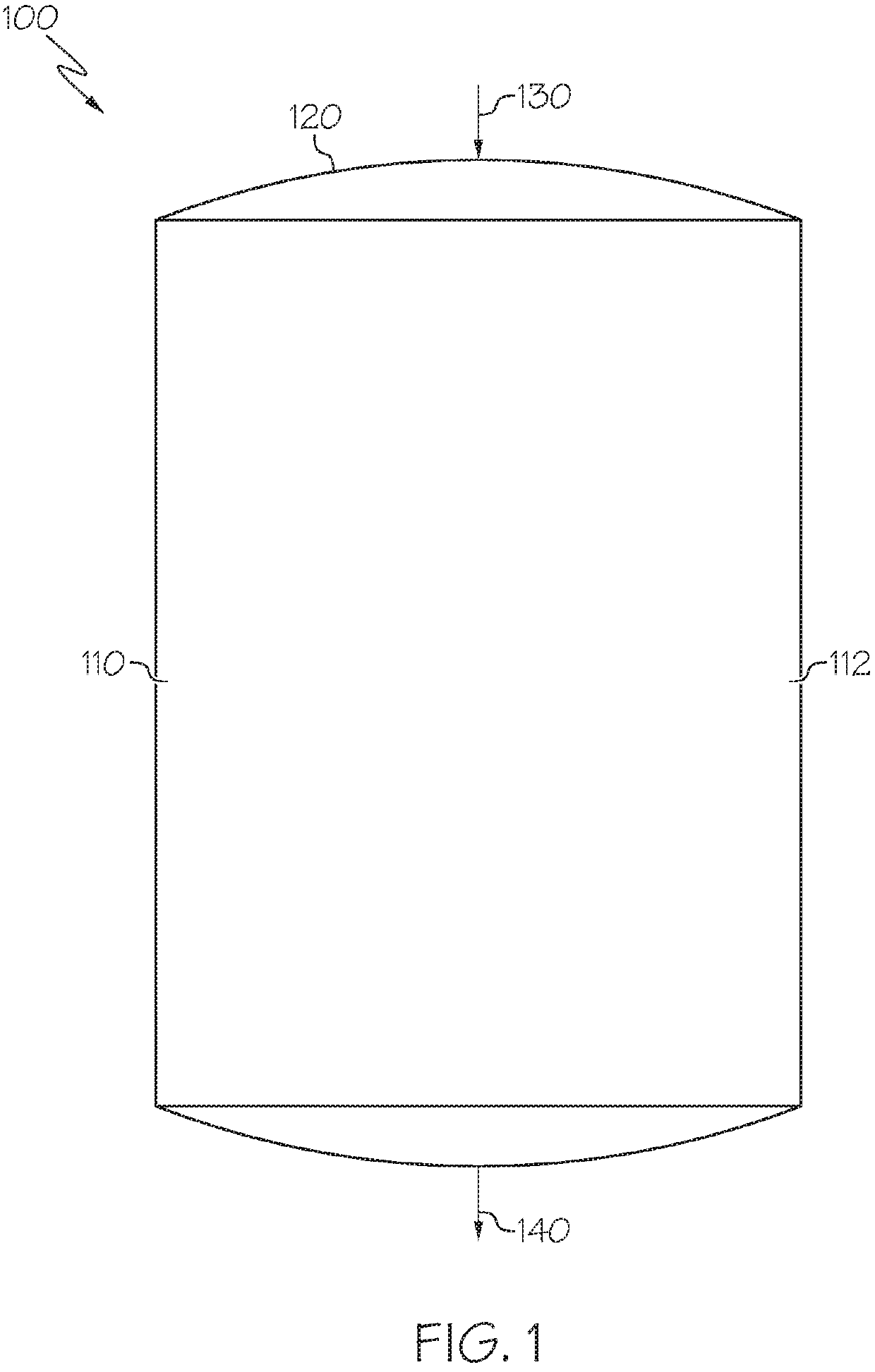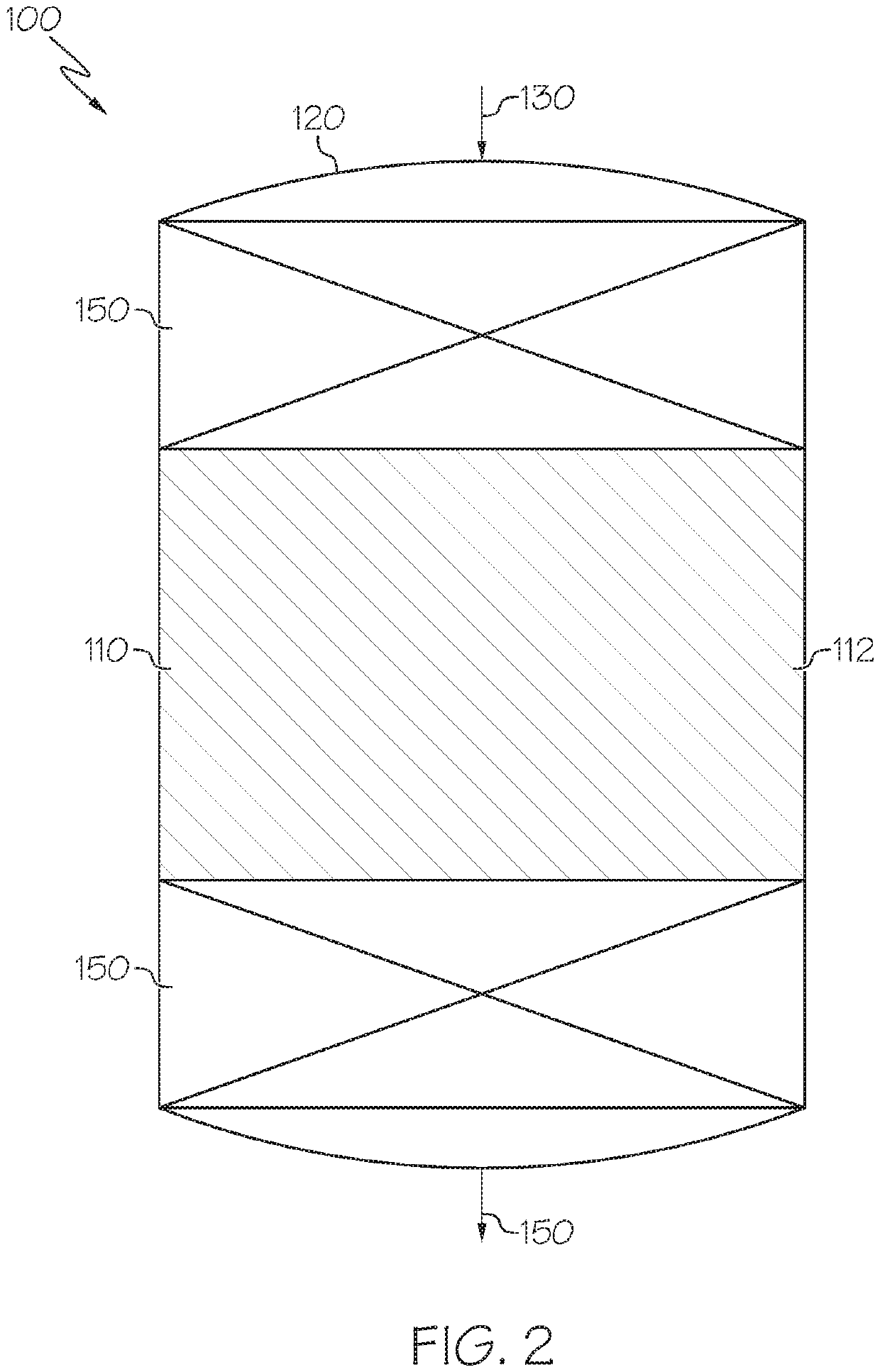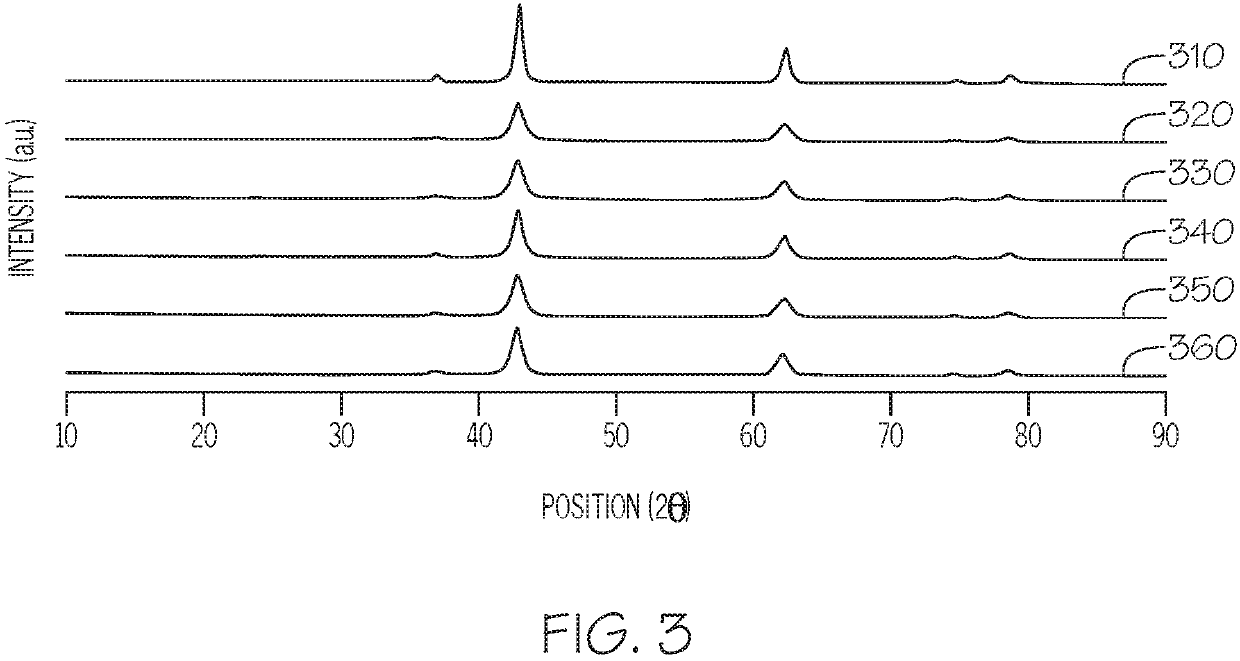Methods of producing isomerization catalysts
a technology of isomerization catalyst and catalyst, which is applied in the direction of physical/chemical process catalyst, metal/metal-oxide/metal-hydroxide catalyst, etc., can solve the problems of inefficiency of butene production process, inability to adequately respond to the rapid increase in 1-butene demand, and conventional 1-, so as to improve the conversion rate of 2-butene and yield, improve the effect of isomerization catalyst and increase the catalytic activity
- Summary
- Abstract
- Description
- Claims
- Application Information
AI Technical Summary
Benefits of technology
Problems solved by technology
Method used
Image
Examples
example 1
Hydrothermal Synthesis of Isomerization Catalyst
[0045]An isomerization catalyst was prepared using hydrothermal synthesis. In particular, 18.02 grams (g) of urea and 15.39 g of magnesium nitrate hexahydrate (Mg(NO3)2.6H2O) were dissolved in 100 milliliters (mL) of deionized water (DI water) and stirred vigorously at room temperature for 1 hour to form a catalyst precursor solution. The catalyst precursor solution was then transferred to an autoclave and placed in an oven at 120° C. for 72 hours at a ramp rate of 1 degree Celsius per minute (° C. / min). The resulting magnesium oxide precipitants were then filtered from the solution via vacuum filtration, dried overnight at room temperature, and then dried in a vacuum oven at 80° C. for 24 hours to form an isomerization catalyst. The isomerization catalyst was then calcined in a calcination oven under air at a ramping rate of 1° C. / min until the isomerization catalyst attained a temperature of 550° C. The isomerization catalyst was the...
example 2
Surfactant-Assisted Hydrothermal Synthesis of Isomerization Catalyst
[0046]An isomerization catalyst was prepared using surfactant-assisted hydrothermal synthesis. In particular, 18.02 g of urea and 15.39 g of magnesium nitrate hexahydrate were dissolved in 100 mL of deionized water and rapidly stirred at room temperature for 1 hour to form a first solution. Cetrimonium bromide (CTAB) was then added to the first solution such that the molar ratio of magnesium to cetrimonium bromide in the first solution was 1:0.03, and the first solution was stirred at room temperature for 2 hours to form a catalyst precursor solution. The catalyst precursor solution was then processed according to the same procedure previously described in Example 1 to form an isomerization catalyst. The isomerization catalyst prepared according to the above-described method is referred to subsequently as the catalyst of Example 2.
example 3
Surfactant-Assisted Hydrothermal Fabrication of Isomerization Catalyst with pH Adjustment
[0047]An isomerization catalyst was prepared using surfactant-assisted hydrothermal synthesis. In particular, 18.02 g of urea and 15.39 g of magnesium nitrate hexahydrate were dissolved in 100 mL of deionized water and rapidly stirred at room temperature for 1 hour to form a first solution. Next, 0.984 g of cetrimonium bromide was added to the first solution, which was then stirred at room temperature for 2 hours to form a catalyst precursor solution. The pH of the catalyst precursor solution was then adjusted to a pH of 5 by the dropwise addition of acetic acid. The catalyst precursor solution was then processed according to the same procedure previously described in Example 1 to form an isomerization catalyst. The isomerization catalyst prepared according to the above-described method is referred to subsequently as the catalyst of Example 3.
PUM
| Property | Measurement | Unit |
|---|---|---|
| temperature | aaaaa | aaaaa |
| particle size | aaaaa | aaaaa |
| temperature | aaaaa | aaaaa |
Abstract
Description
Claims
Application Information
 Login to View More
Login to View More - R&D
- Intellectual Property
- Life Sciences
- Materials
- Tech Scout
- Unparalleled Data Quality
- Higher Quality Content
- 60% Fewer Hallucinations
Browse by: Latest US Patents, China's latest patents, Technical Efficacy Thesaurus, Application Domain, Technology Topic, Popular Technical Reports.
© 2025 PatSnap. All rights reserved.Legal|Privacy policy|Modern Slavery Act Transparency Statement|Sitemap|About US| Contact US: help@patsnap.com



